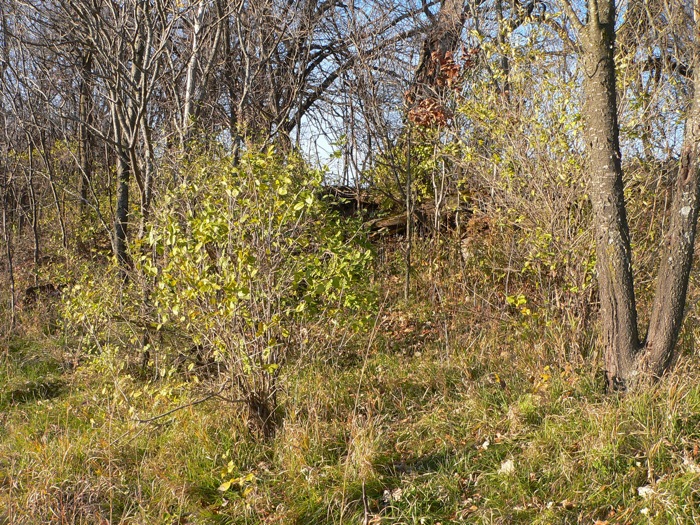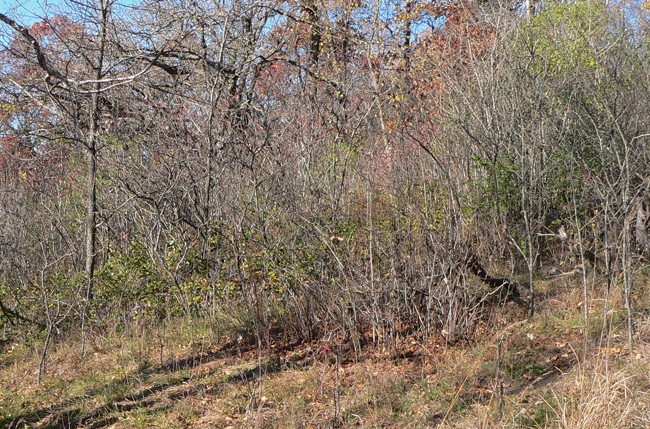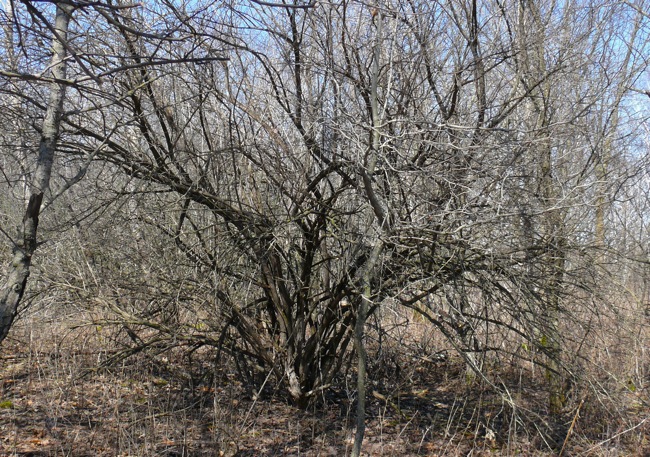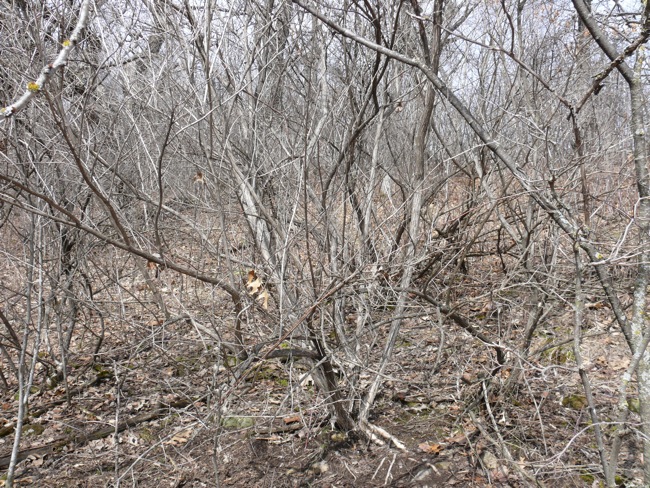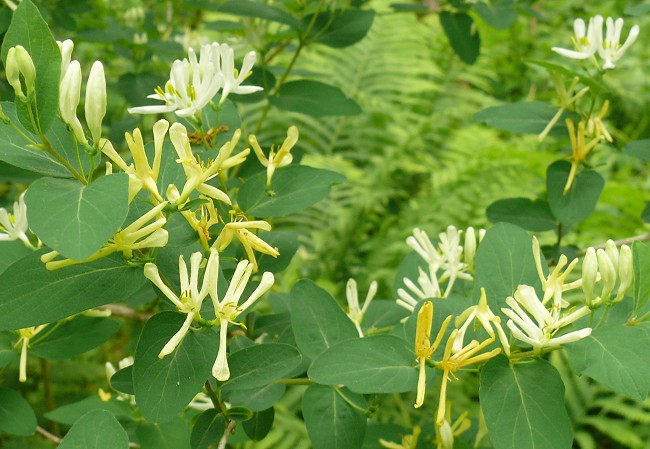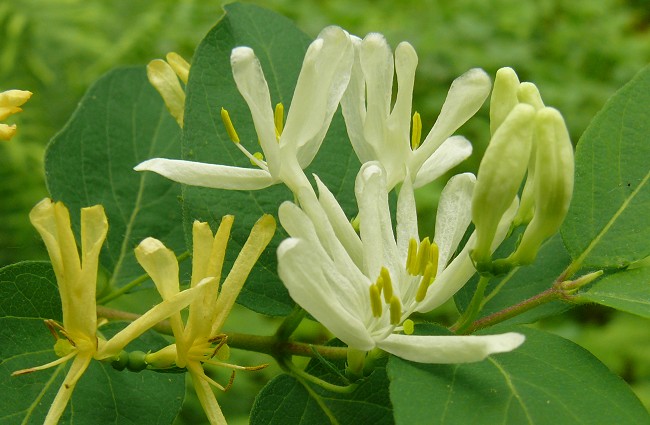There are several Eurasian Honeysuckles which are invasive in midwestern woodlands. We have both Tartarian Honeysuckle (Lonicera tartarica) and Amur Honeysuckle (Lonicera maackii). Both grow into large spreading bushes. The most obvious difference is that the leaflets of Tartarian Honeysuckle are rounded, and the leaflets of Amur Honeysuckle are pointed. The shrub layer in some parts of our woodlands is almost entirely made up of these exotic bushes.
Some of the older bushes get to be huge, with many stems.
In the spring, they have beautiful, fragrant flowers.
Close-up of the flowers
And in the late summer, many red berries
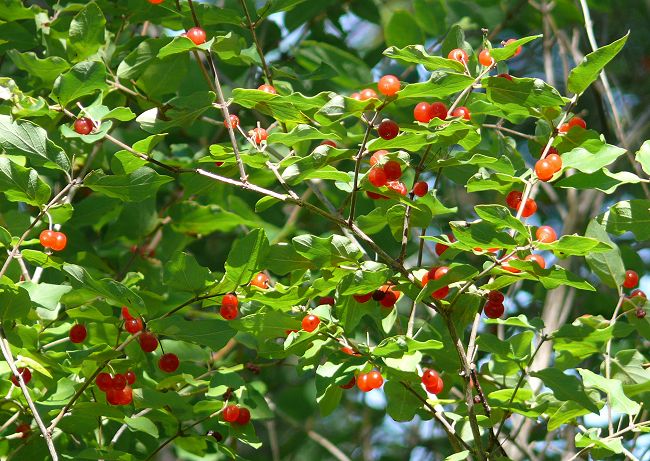
Unfortunately, birds love the berries, so they spread the seeds everywhere.

One interesting study suggests that exotic honeysuckles make woodlands more attractive to deer, and thus increase the number of deer ticks in areas where there are more honeysuckles. Another good reason to get rid of these invasive shrubs.
The best method I’ve found for control is to cut the stems with either clippers, hand saw, or chain saw, and treat each stem with 20% glyphosate. Tom Brock did a study to determine which herbicide and which time of year works best for this treatment. He found that using glyphosate at any time of year works fine.
I tend to do most of my cutting in the fall and early spring – whenever other invasive projects aren’t too pressing. Because the bushes are so big, I can do a large area fairly quickly, and make a big visual difference in the woodland.
I often find very small honeysuckles – with one or two short branches – when I’m clearing brush. These can usually be pulled out fairly easily – they have just a few very shallow roots at that early stage.

